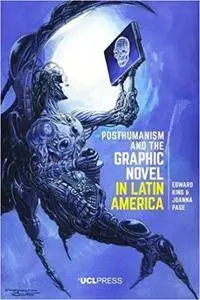Posthumanism and the Graphic Novel in Latin America by Edward King
English | July 3, 2017 | ISBN: 1911576461 | 266 Pages | PDF | 48 MB
English | July 3, 2017 | ISBN: 1911576461 | 266 Pages | PDF | 48 MB
The emergence of the contemporary graphic novel across many regions of the world has been closely implicated with posthumanist thought. Science fiction narratives forged from multiple real and imagined couplings between technology, bodies and subjectivities feature prominently in the various competing genealogies for the medium. The French bande dessinée tradition, for example, has long been a vehicle for futuristic tales of human- machine hybrids. The anarchic comics magazine Métal Hurlant, published by Les Humanoïdes Associés between 1975 and 2000, functioned as a laboratory for comic book experimentation with form and narrative, as well as a point of convergence between science fiction traditions and post- 1968 radical politics. The key texts produced within this culture, such as Enki Bilal’s innovative La Trilogie Nikopol (first published separately between 1980 and 1992) and The Incal, produced in partnership between Jean Giraud (aka Moebius) and the Chilean- born cinema auteur Alejandro Jodorowsky, adopt science fiction as a critical discourse for questioning the socio- technological changes of late modernity. Bilal’s masterpiece articulates an archetypical postmodern anxiety over the erosion of individual memory by electronic communication devices, staging the gradual schizophrenic breakdown of its protagonists as they come under increasing pressure from invasive technologies. As their subjectivities fragment, so does the book itself. Bilal’s layered use of acrylics, pastels and crayons becomes heavier as the narrative unfolds, providing a stifling visual counterpart to the involuted and paranoid plot lines. Close parallels may be traced between the thematic focus on media, the technological supports of communication and cognition, and the reader’s absorption into the textured materiality of the individual panels.



